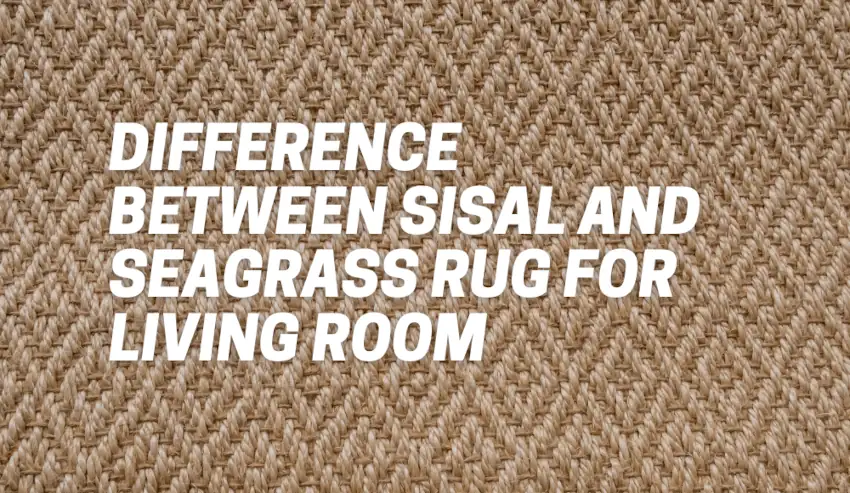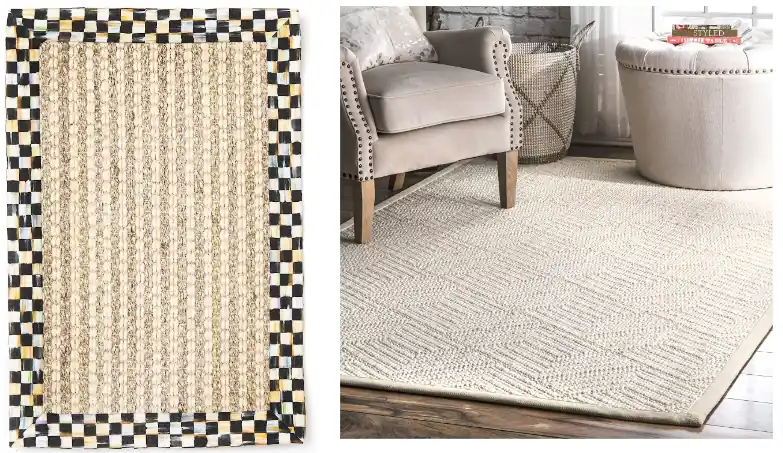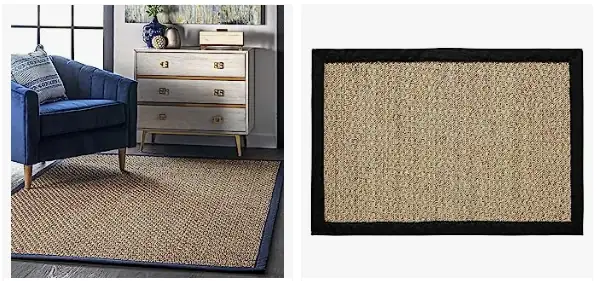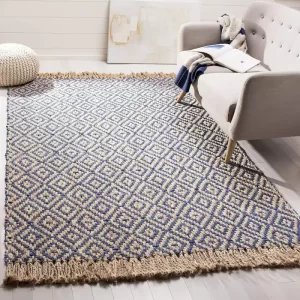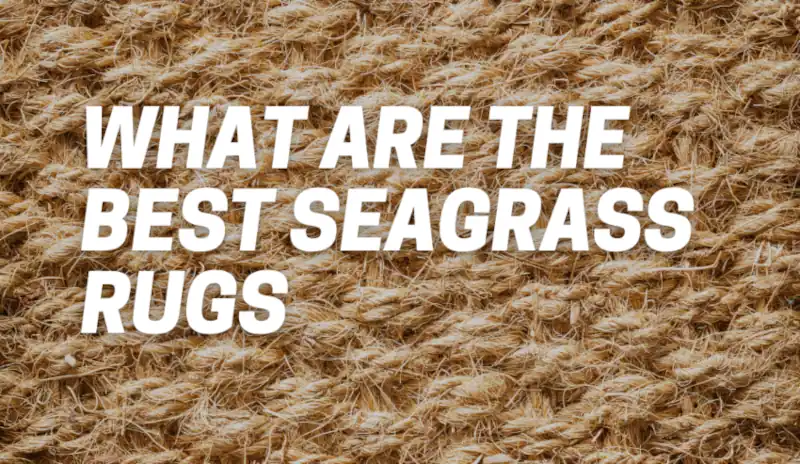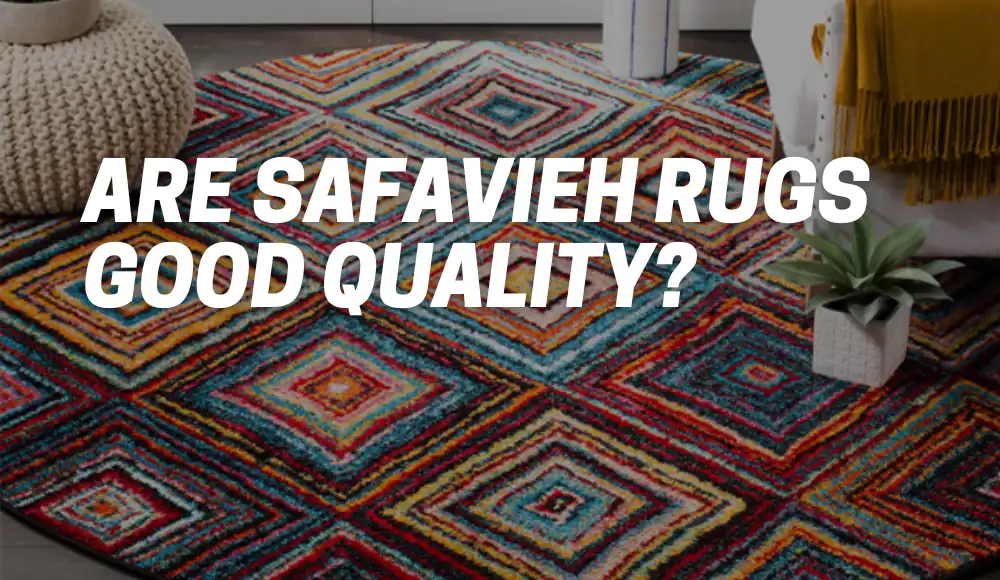If you’re in the market for a new rug to spruce up your living room, you may have come across the terms “sisal rugs” and “seagrass rugs.” These natural fiber rugs have gained popularity for their unique texture, durability, and eco-friendly qualities. But what exactly sets them apart? In this article, we’ll delve into the world of sisal and seagrass rugs, exploring their similarities, difference between sisal and seagrass rug for living room, and the best choice for your home.
So let’s dive in and discover which one suits your style and needs.
Importance of Choosing the Right Rug for a Living Room
Choosing the right rug for your living room can make all the difference in how comfortable and welcoming it feels. A well-chosen rug can anchor furniture groupings, add warmth to an otherwise cold space, or bring visual interest with color or pattern.
But beyond aesthetics, you should also consider factors such as durability and maintenance when selecting a rug.
Living rooms tend to be high-traffic areas where spills are common occurrences. That’s why choosing a durable rug that can withstand heavy use is crucial.
In addition to being able to take wear-and-tear over time without showing much damage or staining quickly, you want something that’s easy to clean so you won’t spend hours scrubbing out stains or bringing up dirt with each vacuuming session.
Overall investing in high-quality floor coverings will help protect your floors while adding style to your home.
Is Sisal and Seagrass the Same Thing?
While sisal and seagrass rugs fall into the same category of natural fiber rugs, they are not the same thing.
Sisal comes from the leaves of the agave sisalana plant, which is primarily grown in East Africa and Brazil.
On the other hand, seagrass rugs are made from grass-like plants found in underwater meadows, typically harvested in Asia.
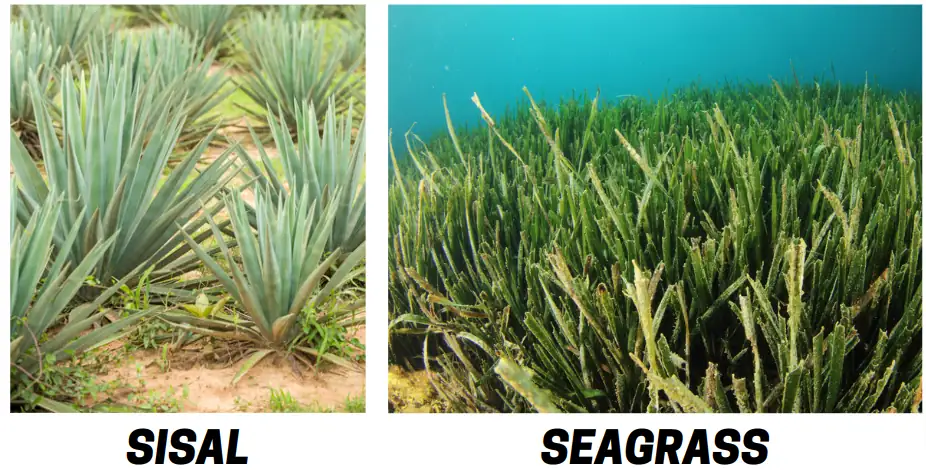
Why Do People Like Sisal Rugs?
Sisal rugs have garnered a loyal following for several reasons.
- Firstly, they exude a rustic charm that adds warmth and character to any living space. The natural earthy tones of sisal create a cozy ambiance, perfect for creating a relaxing environment.
- Additionally, sisal rugs are highly durable, making them suitable for high-traffic areas like the living room. Their strength and resilience allow them to withstand the wear and tear of daily life, making them a practical choice for busy households.
What is the Difference Between Sisal and Seagrass Rugs?
Although sisal and seagrass rugs share some similarities, they differ in terms of texture, appearance, and durability.
Sisal rugs have a coarser texture compared to seagrass rugs, which can feel smoother underfoot. Seagrass rugs often have a more uniform appearance with a natural sheen, while sisal rugs display natural variations and knots, adding to their organic appeal.
When it comes to durability, sisal rugs have a slight edge. Their sturdy construction and dense fibers make them less prone to unraveling or shedding.
Seagrass rugs, while still durable, may show signs of wear over time, particularly in high-traffic areas. However, both sisal and seagrass rugs can last for many years with proper care and maintenance.
Are Sisal Rugs Good for Living Room?
Sisal rugs can be an excellent choice for the living room.
Their natural beauty and textured appearance can enhance the overall aesthetics of the space, giving it a cozy and inviting feel.
Moreover, sisal rugs are known for their sound-absorbing properties, helping to reduce echoes and ambient noise in the room. This can be particularly beneficial in open-concept living areas or homes with hardwood floors, where sound can bounce off hard surfaces.
Difference Between Sisal and Seagrass Rug for Living Room: User Advice
Here are some main points regarding the sisal and seagrass rugs given by users on the Internet:
| Main Points | Comments |
|---|---|
| Preference | Some individuals prefer braided jute rugs over sisal or seagrass for the living room due to their softer and cozier feel. |
| PB Sisal Rugs | PB sisal rugs are easy to vacuum and the rough texture tends to soften over time. |
| Durability | PB sisal rugs are durable and spot-clean well. Sisal is preferred for its look, although seagrass is considered softer. |
| Texture | Sisal rugs can feel rough on the feet and may shed. |
| Similarity | There isn’t a significant difference in the appearance, feel, or wear between sisal and seagrass rugs. |
| Natural Fiber Store | Recommendations are made to check out a natural fiber rug store for cost-effective options. |
| Ordering Decision | A user appreciates the shared information and decides to order a rug from a recommended store. |
| Seagrass Discomfort | While seagrass rugs are liked for their look, walking on them barefoot in the living room is found uncomfortable by one person. |
| Home Decorators | Consideration is given to ordering from Home Decorators collection for the living room. |
| Padding and Treatment | Interest is expressed in padding and treatment options for seagrass rugs in the dining room and living room. |
| “The Perfect Rug” | Inquiry is made about ordering a sisal rug from “The Perfect Rug” company. |
Sisal Rugs for Living Room: Pros and Cons
Pros: What are the disadvantages of sisal?
- Natural and eco-friendly material.
- Adds warmth and character to the living room.
- Durable and can withstand high-traffic areas.
- Sound-absorbing qualities reduce noise.
- Suitable for those with allergies, as they do not trap dust and allergens like carpets do.
Cons:
- Coarser texture may not be as soft underfoot.
- Can be prone to stains and require regular cleaning.
- Not ideal for moisture-prone areas, as sisal is sensitive to water.
Seagrass Rugs Pros and Cons for Living Room
Pros:
- Natural, renewable material.
- Smooth texture feels comfortable underfoot.
- Resistant to stains and spills, making it easy to clean.
- Provides a natural sheen and uniform appearance.
- Suitable for high-traffic areas due to its durability.
Cons:
- May show signs of wear over time, especially in high-traffic areas.
- Not as sound-absorbing as sisal rugs.
- Less variety in color and pattern options compared to sisal rugs.
What is Softer: Sisal or Seagrass?
When it comes to softness, seagrass rugs tend to be softer than sisal rugs.
The smooth texture of seagrass makes it more comfortable to walk on, making it a popular choice for areas where comfort is a priority.
Sisal rugs, while not as soft, offer a unique tactile experience with their coarser texture, which some individuals may find appealing.
Are Sisal Rugs Durable?
Yes, sisal rugs are highly durable.
Their sturdy construction and dense fibers contribute to their resilience, allowing them to withstand heavy foot traffic without showing signs of wear and tear.
Sisal rugs are often chosen for high-traffic areas like living rooms precisely because of their durability, ensuring they can maintain their beauty for years to come.
Are Seagrass Rugs Scratchy?
Seagrass rugs, although not as soft as some other rug materials, are generally not scratchy.
The smooth texture of seagrass fibers ensures a comfortable feel underfoot without causing any irritation or discomfort. However, it’s important to note that individual sensitivity to texture can vary, so it’s always a good idea to test the rug’s feel before making a purchase.
Are Seagrass Rugs Comfortable?
While seagrass rugs may not be as soft as some other rug materials, they still offer a level of comfort.
The smooth texture of seagrass fibers provides a pleasant sensation underfoot and can contribute to a cozy atmosphere in the living room.
Additionally, seagrass rugs have a natural cooling effect, making them suitable for warmer climates.
Price Range Sisal vs Seagrass Rugs
When it comes to the cost of sisal and seagrass rugs, price points are relatively similar. However, there can be variations based on the style and size of the rug.
In general, Seagrass rugs tend to be less costly than sisal rugs due to its high availability and easy manufacturing process.
Sisal mats may cost more but it is worth it given the fact that they are sturdier and would last longer compared with seagrass mats which can wear off easily over time.
Ultimately, choosing between a Sisal or Seagrass rug comes down to personal preference based on what you want from your rug in terms of comfort, durability, and aesthetics.
Consider all factors before making an informed decision so that you get value for your money while enjoying an eco-friendly addition to your home décor.
How to Choose the Right Rug for Your Living Room
Choosing the right rug for your living room can be a daunting task, with so many options available on the market. However, there are certain factors that you should consider before making your final decision.
Here are some things to keep in mind when selecting a rug for your living room:
Lifestyle
One of the most important factors to consider when choosing a rug for your living room is your lifestyle. Do you have children or pets?
Are you someone who enjoys having guests over often? If so, then you will want to choose a rug that is durable and easy to clean.
Sisal and seagrass rugs are both good options if you have a busy household, as they are both durable and easy to maintain.
However, sisal may be better if you have small children or pets who tend to make messes because it is more stain-resistant than seagrass.
If your lifestyle is less hectic, then you may want to consider opting for a softer rug material, such as wool or cotton. These types of rugs are more comfortable underfoot but may not be as durable as sisal or seagrass.
Decor Style
Another factor to consider when choosing a rug for your living room is the decor style of the room. You will want to choose a rug that complements the style of your furniture and other decor elements in the space.
If you have modern furniture with clean lines, then a sisal or seagrass rug in neutral colors such as beige or tan may work well.
On the other hand, if you have traditional furniture with ornate details and warm colors such as reds or browns, then an Oriental-style wool rug may be more appropriate.
Make sure that the colors and patterns of your chosen rug do not clash with other elements in the room, as this can create a disjointed look.
Foot Traffic
Consider the amount of foot traffic that your living room gets when choosing a rug. If you have a busy household with lots of people walking through the space on a daily basis, then you will want to choose a rug material that is durable and can withstand heavy use.
Sisal and seagrass rugs are both great options for high-traffic areas because they are sturdy and can handle lots of foot traffic.
However, if you have less foot traffic in your living room, then you may be able to get away with choosing a softer material such as wool or cotton.
Wool sisal rug
Keep in mind that these materials may not be as durable in the long run and will require more maintenance than sisal or seagrass.
Best Seagrass Rugs
If you’ve decided that a seagrass rug is the perfect fit for your living room, here are a few options worth considering:
- Natural Seagrass Area Rug: A classic choice that complements a variety of décor styles, this rug offers a natural sheen and durability.
- Textured Seagrass Rug: Featuring a subtle texture, this rug adds depth and interest to your living room while maintaining the benefits of seagrass.
- Seagrass Chevron Rug: For a touch of contemporary flair, a seagrass rug with a chevron pattern can elevate your living room’s aesthetics.
Seagrass area rug
Seagrass Chevron Rug
FAQs
What Happens if a Seagrass Rug Gets Wet?
Seagrass rugs are naturally moisture-resistant, but if they do get wet, it’s important to dry them thoroughly.
Failure to do so may result in mold or mildew growth, which can damage the rug and emit unpleasant odors. Hang the rug in a well-ventilated area or use a fan to speed up the drying process.
Does Seagrass Mold Easily?
Seagrass rugs have natural resistance to mold and mildew due to their inherent moisture-resistant properties.
However, if exposed to prolonged dampness or inadequate ventilation, seagrass rugs can still develop mold.
Regular cleaning and proper maintenance, including prompt drying in case of spills or moisture exposure, can help prevent mold growth and keep your seagrass rug in pristine condition.
Conclusion
In conclusion, both sisal and seagrass rugs have their unique qualities and can be fantastic additions to your living room.
Sisal rugs offer a rustic charm and exceptional durability, while seagrass rugs provide a smoother texture and a natural sheen. Ultimately, the choice between the two depends on your personal preferences, lifestyle, and the specific requirements of your living space.
Whichever you choose, these natural fiber rugs are sure to enhance the beauty and comfort of your living room.
